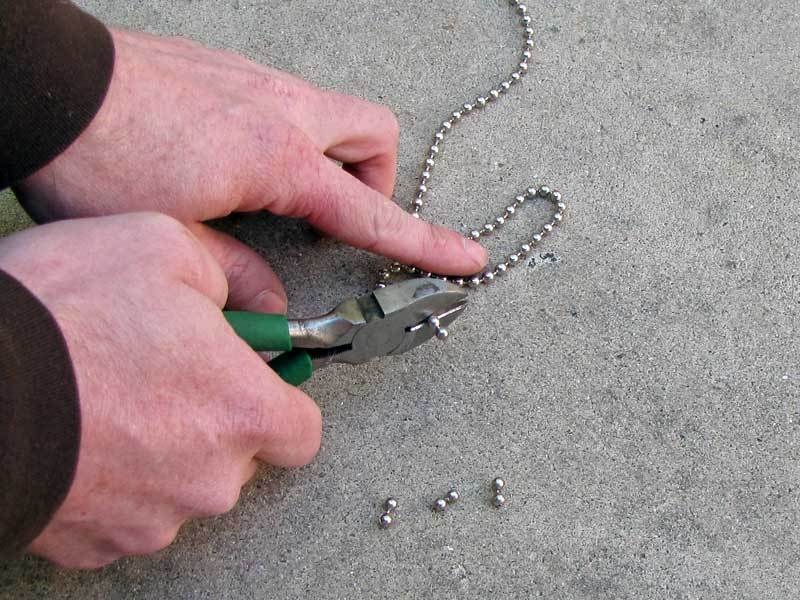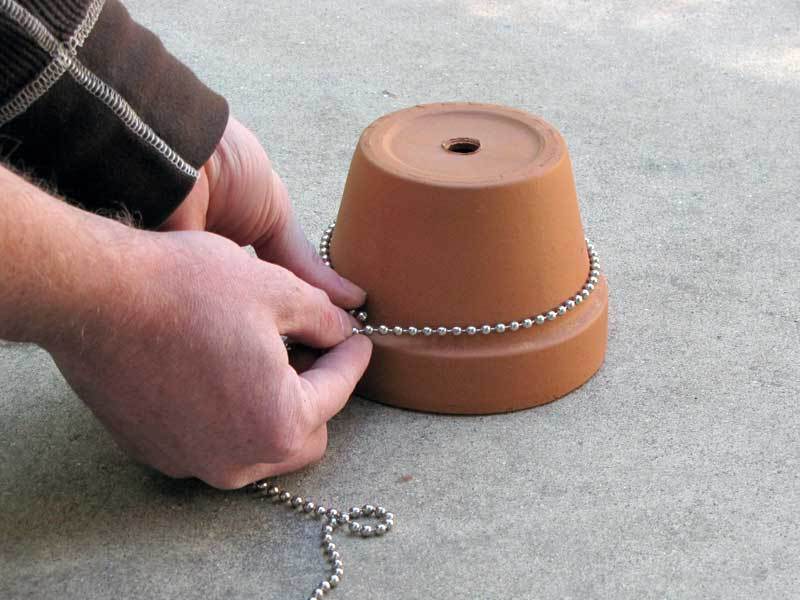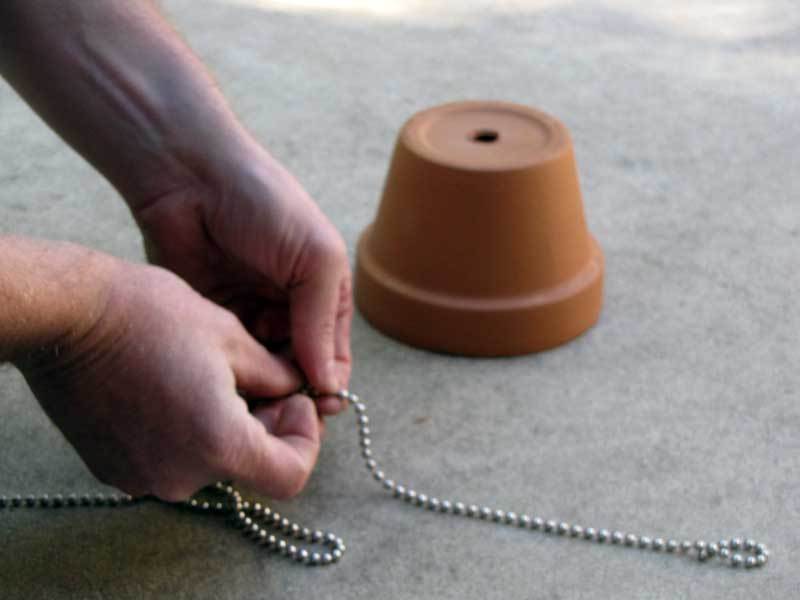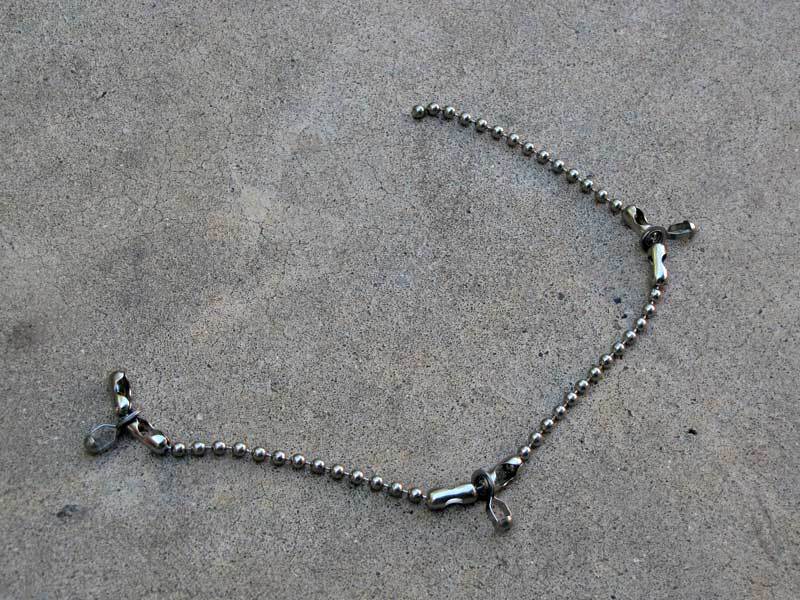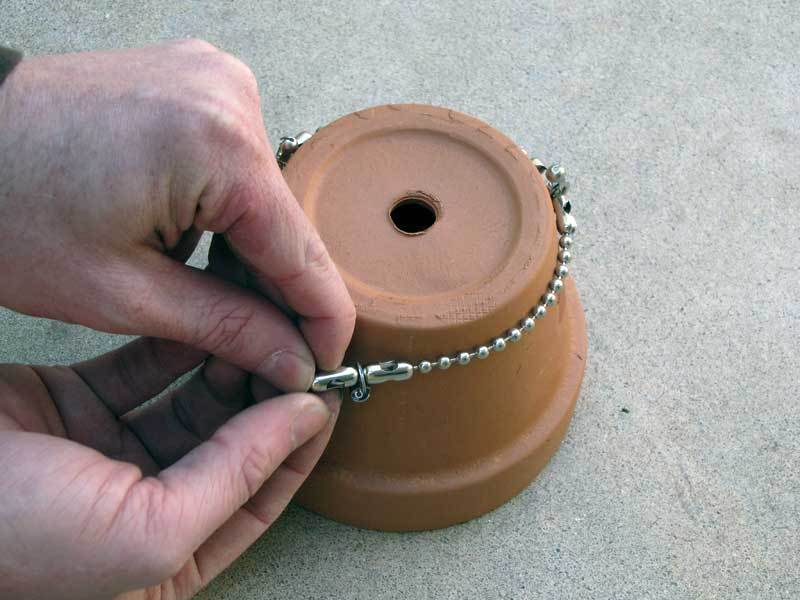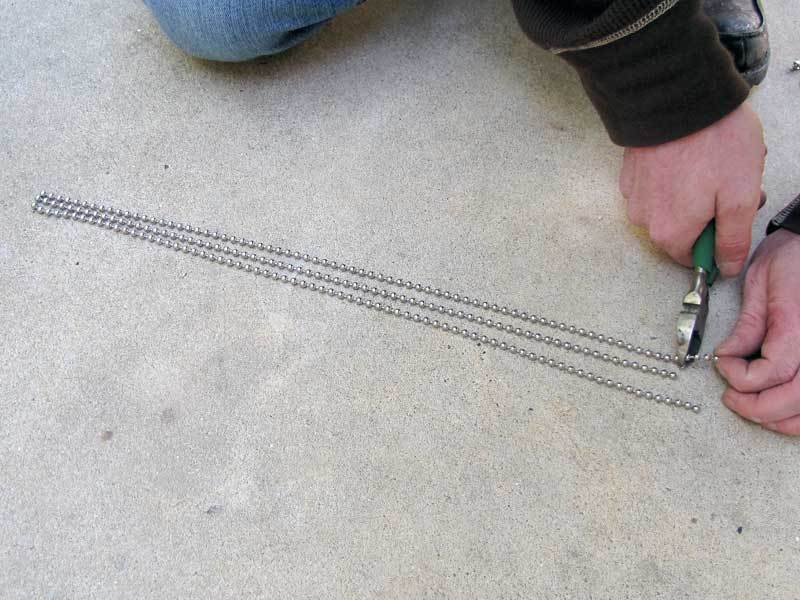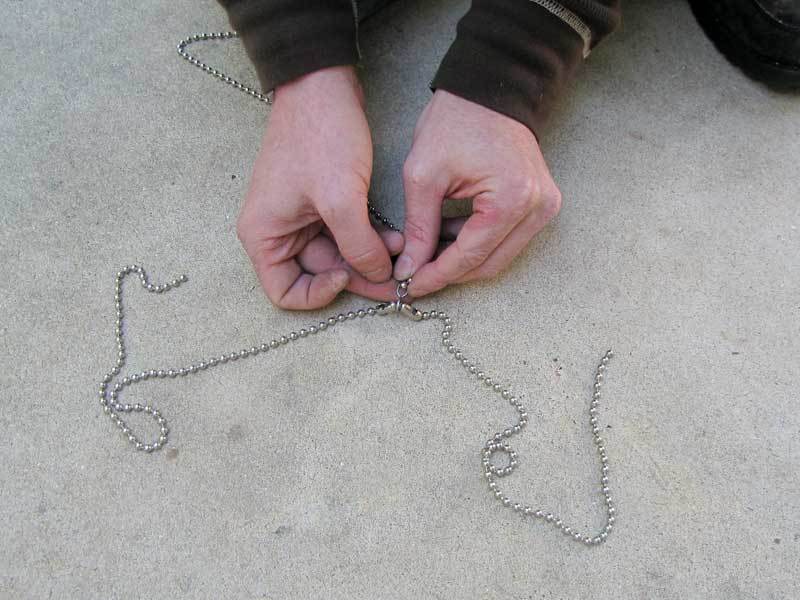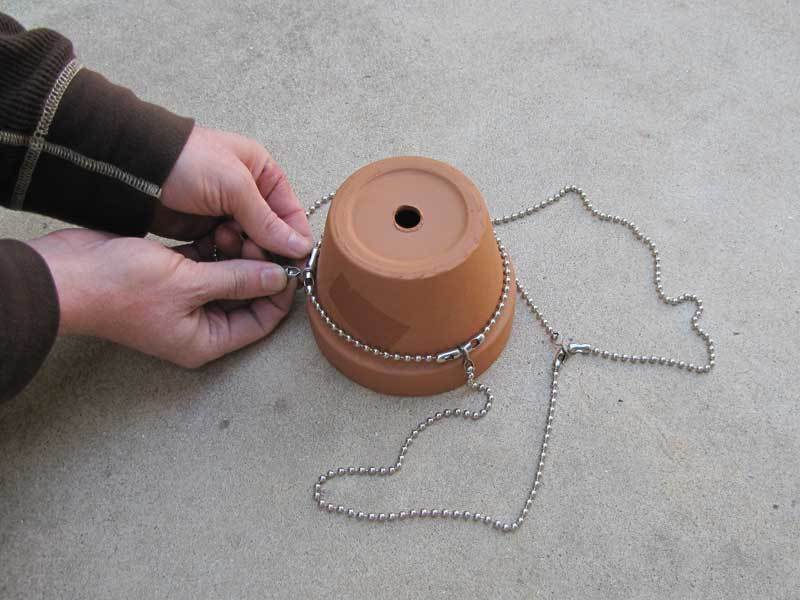Most people are familiar with the common ball chain “straight coupling” that lets you join one end of a chain to another.
There’s also a less-familiar “eye” coupling, however, that lets you join the end of a ball chain to the middle of another. You crimp the terminating chain’s last ball into the coupling and pass the continuous chain through the eye, the opening of which is just large enough to pass the spherical links. It is not, however, large enough to pass the diameter of a straight coupling. So if you sandwich an eye coupling between two straight couplings, you can make a fixed three-way joint. And believe me, the fixed joints are necessary if you’re going to make complex constructions. If you leave them free to slide, things rapidly become very tangled.
A simple three-way joint constructed from ball-chain fittings is the core of the project. It opens up the possibility for pretty much any netted ball-chain webbing you can imagine. This project just covers the most basic, utilitarian design of a simple plant hanger, but once you know how to make these joints, you can pretty much make a ball-chain webbing to fit any object.



